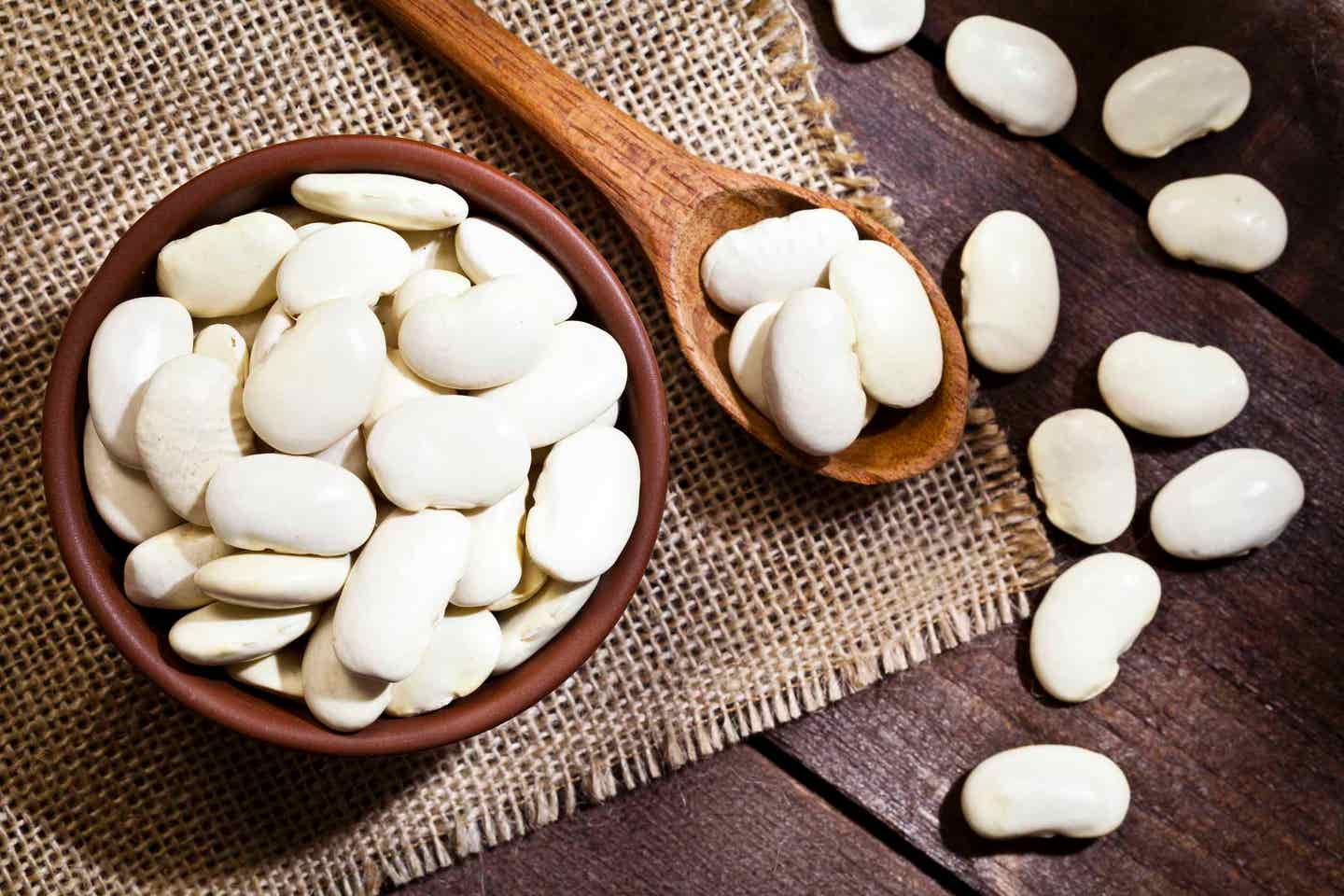
Everything You Need to Know About Lima Beans (aka Butter Beans)
When it comes to lima beans, lots of cooks have lots of questions. Are they the same as butter beans? What’s the difference between fresh and dried? Green and white? What about purple and speckled? And what the heck does “Fordhook” mean? Read on for the answers to all your lima bean questions, plus tips for cooking with fresh, dried, and canned varieties.
Are Butter Beans and Lima Beans the Same Thing?
Let’s start by setting the record straight: Lima beans and butter beans are the same thing. Native to Central and South America, the flat, kidney-shaped legumes get one name from the capital of Peru and the other from colloquial use. The names are used interchangeably by cooks, gardeners, and producers; you’ll sometimes see packages labeled butter beans and packages labeled lima beans side by side in the supermarket aisle.
Butter beans go by other names, as well. Thomas Jefferson favored sieva beans, an heirloom lima bean variety. Greek gigante beans are also a type of dried lima beans. In India, dried limas are called double beans. What all the types have in common is a flat crescent shape, thin skin, and a high starch content that makes them especially smooth and creamy when cooked.
Cooking with Butter Beans
Lima/butter beans are one of the few beans that are readily available and reasonably priced in all forms: fresh, frozen, canned and dried. Here’s how to cook with each type.
Fresh Butter Beans
Fresh butter beans are picked before the beans have fully matured and are still tender. The fresh beans are usually green, but they can also be white, purple, or speckled. Summer is the season for fresh butter beans—the plants need at least two months of warm soil for the beans to develop in their thick flat pods.
Shopping Tips
When buying fresh butter beans, look for whole pods or shelled beans that have no black spots or blemishes and show no signs of yellowing. Store both bean pods and shelled beans in a paper bag in the fridge for up to 5 days.
Prep
Fresh butter beans cook in about 30 minutes, though some recipes call for stewing them longer to draw out even more creaminess and buttery flavor.
Frozen Lima Beans
Fresh-frozen lima beans are sometimes labeled as baby, young, green, or “Southern-style” lima beans to distinguish them from larger, dried varieties. “Fordhook” is another term you may see on frozen lima beans. It refers to the Fordhook bean plant that was developed and widely marketed by Burpee seeds in the early 20th century. Fordhook lima beans are still renowned for their flavor and are grown primarily for fresh and frozen beans.
Shopping Tips
Give frozen bags a good shake to make sure the contents haven’t thawed and refrozen in large clumps.
Prep
In addition to following package directions for cooking, you can customize frozen butter beans’ texture according to the type of recipe.
Soups and stews: Add frozen beans directly to soups and stews so that they hold their shape.
Salads: Cook the beans 1 to 2 minutes less than the recommended cooking time when using in salads and dishes where you want a firmer texture.
Sauces and dips: For blended recipes like sauces and hummus, add 5 minutes or more to the cooking time so they get extra soft and creamy.
Canned Lima Beans
Canned young lima beans (green or white) have been prepared like other canned beans. Their texture is ultra-soft, and they have a canned-vegetable flavor that some love and others loathe (kind of like canned peas).
Shopping Tips
When buying canned lima beans, check to be sure the label doesn’t say “seasoned,” which means they have been cooked with oil, spices, and sometimes meat.
Prep
Canned lima beans benefit from a good rinse to remove the thick liquid they are packed in. Because they are already cooked, canned lima beans can be added directly to recipes and blended into sauces and dips.
Dried Lima Beans
Dried lima beans range in size from baby to giant and are usually cream-colored or white. They are harvested after the beans have fully matured then dried for long-term storage. Larger varieties often come from Peru or Greece (gigantes), where the specific soils and growing conditions give them distinctive flavors.
Shopping Tips
Choose the right sized bean for your recipe, and shop from a store where there is a lot of inventory turnover to ensure the beans you buy haven’t been sitting on the shelf for months.
Prep
Rinse, presoak, and cook dried lima beans the way you would any other dried bean, and be sure to consult the package directions.
What Do Lima Beans Taste Like?
Even though the days of bland, stewy lima beans served in school cafeterias are long past, lima beans still suffer from the bad reputation they got from generations of traumatized schoolchildren.
The truth is, lima beans are lusciously creamy and mild. Fresh lima beans have a taste and texture that’s similar to edamame and fava beans. Dried limas’ thin skins and high starch content help them get especially tender and naturally absorb other flavors when cooked.
Our Favorite Lima Bean Recipes
From a rich, smooth hummus and a tangy salad to a selection of hearty soups and stews, these recipes showcase all the ways you can use fresh, fresh-frozen, and dried lima beans.

About the Author

About the Author
Mary Margaret Chappell
Join our mailing list
Get free recipes and the latest info on living a happy, healthy plant-based lifestyle.
By providing your email address, you consent to receive newsletter emails from Forks Over Knives. We value your privacy and will keep your email address safe. You may unsubscribe from our emails at any time.